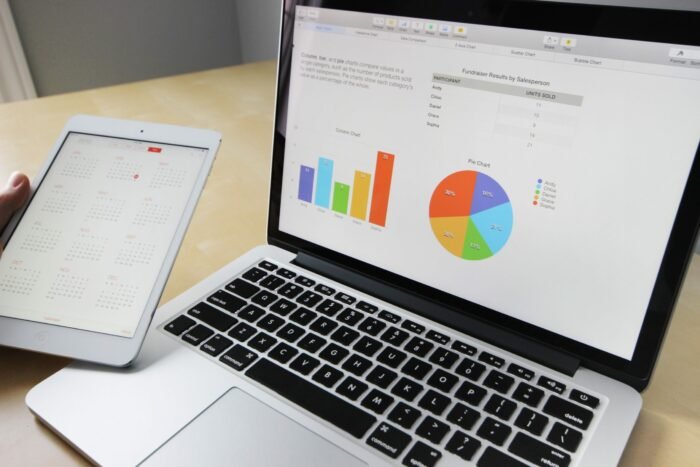Welcome to our blog post on the power of effective note-taking in administrative roles! Whether you’re an office manager, executive assistant, or team lead, mastering the art of note-taking is a crucial skill that can significantly enhance your productivity and success in the workplace. In this article, we’ll explore strategic techniques for taking notes, discuss various tools and methods available – from traditional pen and paper to digital apps – and provide valuable tips for organizing, reviewing, and sharing your notes. So grab a notebook or fire up your favorite note-taking app as we dive into the world of efficient note-taking that will revolutionize how you work!
The Power of Effective Note-Taking in Administrative Roles
1. Strategic Note-Taking for Administrators
Strategic note-taking is an essential skill for administrators. It goes beyond simply jotting down information; it involves actively engaging with the content and capturing key points that are relevant to your role. Here are a few tips to help you take notes strategically:
1. Listen with intent: When attending meetings or discussions, listen attentively to grasp the main ideas being discussed. Focus on understanding the context and objectives so you can capture meaningful insights.
2. Identify priorities: As an administrator, your role often involves managing multiple tasks and projects simultaneously. Take strategic notes by identifying the most important action items or decisions that need immediate attention.
3. Use abbreviations and symbols: Develop your own shorthand system to save time while taking notes without sacrificing clarity. This could include using arrows for actions required, asterisks for important points, or checkmarks for completed tasks.
4. Capture actionable details: Don’t just record random thoughts; focus on noting down specific action steps or follow-up tasks that arise during discussions or brainstorming sessions.
5. Include relevant context: When reviewing your notes later, make sure they provide enough context for you to understand their significance even after some time has passed.
By adopting these strategies, you’ll be able to take more focused and purposeful notes as an administrator, helping you stay organized and better equipped to handle your responsibilities efficiently.
2. Choosing the Right Note-Taking Tools: From Pen and Paper to Digital Apps
When it comes to note-taking, there are a plethora of tools available to administrative professionals. From traditional pen and paper to digital apps, the options seem endless. But how do you choose the right tool for your needs?
- Pen and paper have long been favored by many for its simplicity and tactile experience. The act of physically writing down notes can help with memory retention and understanding. However, it can be cumbersome when it comes to organizing and searching for specific information.
- On the other hand, digital note-taking apps offer convenience and flexibility. With features like searchability, tagging, and syncing across devices, they make it easy to access your notes anytime, anywhere. Apps like Evernote or Microsoft OneNote provide a wide range of functionalities such as attaching files or images, creating checklists or reminders.
- The choice between pen and paper vs. digital note-taking depends on personal preference and workflow requirements. Some may find comfort in the traditional method while others embrace technology for its efficiency.
- The key is finding a tool that suits your individual needs – one that helps you stay organized, easily retrieve information when needed, and collaborate with colleagues if necessary.
Remember: It’s not about which tool is better; what matters most is using a note-taking system that works best for you! So experiment with different tools until you find the perfect fit!
3. Active Listening Techniques for Better Note-Taking
Effective note-taking begins with active listening. By honing your active listening skills, you can capture important information and details accurately in your notes. Here are some techniques to help you become a more attentive listener:
1. Stay focused: Eliminate distractions and give your full attention to the speaker. Maintain eye contact and avoid multitasking.
2. Ask clarifying questions: If something is unclear or you need additional information, don’t hesitate to ask follow-up questions. This shows that you are engaged and interested in understanding the topic thoroughly.
3. Paraphrase key points: Summarize what the speaker has said in your own words to ensure comprehension. This not only helps solidify your understanding but also aids in capturing essential ideas when taking notes.
4. Use visual cues: Visual cues can assist in remembering key concepts or connections between ideas discussed during a meeting or conversation. Try using symbols or diagrams alongside text-based notes to enhance retention.
5. Practice empathy: Put yourself in the speaker’s shoes and try to understand their perspective fully. This will enable you to capture not only facts but also nuances of tone, emotion, and body language that may influence decision-making later on.
By incorporating these active listening techniques into your note-taking process, you’ll be able to create comprehensive and meaningful records that serve as valuable references for future tasks and discussions within an administrative role.
4. Organizing and Categorizing Notes: Creating a System for Easy Retrieval
When it comes to effective note-taking, organizing and categorizing your notes is key. Without a system in place for easy retrieval, you may find yourself wasting precious time searching for specific information when you need it most. Here are some tips on creating a system that works:
1. Choose a Method: There are various methods you can use to organize your notes, such as using color-coding systems, creating tabs or sections in notebooks, or utilizing digital tools like Evernote or OneNote.
2. Consistent Formatting: Establishing consistent formatting guidelines will make it easier to scan through your notes quickly and find what you’re looking for. For example, use bullet points or numbering for action items, highlight important details with bold or underline, and include relevant headers or subheadings.
3. Create Categories: Determine the categories that make sense for your role and job responsibilities. This could be based on projects, clients, meetings, or any other relevant criteria. Assign each note to its respective category to ensure organization.
4. Tagging System: Consider implementing a tagging system where you assign keywords or tags to each note. This allows for even more efficient searching and cross-referencing of related topics.
5. Regular Maintenance: Set aside regular time to review and update your notes accordingly. Remove any outdated information and ensure everything is properly categorized so that it remains useful over time.
By taking the time upfront to establish an organized system for your notes, you’ll save yourself valuable time later when trying to locate specific information quickly and efficiently.
5. Meeting Minutes and Documentation
One of the most important aspects of effective note-taking in administrative roles is capturing accurate meeting minutes and documentation. When attending meetings, administrators play a crucial role in recording key discussions, decisions, and action items. These meeting minutes serve as a valuable reference for all participants and stakeholders.
To ensure comprehensive documentation, it’s essential to listen actively during meetings. Paying attention to details allows administrators to capture relevant information accurately. This includes noting down the names of attendees, important deadlines or milestones discussed, and any challenges or concerns raised.
Organizing meeting minutes is equally vital for easy retrieval later on. Creating a consistent format with clear headings helps categorize different topics or agenda items discussed during the meeting. This structure makes it easier to locate specific information when needed.
In addition to capturing discussions and decisions accurately, administrators should also document action items assigned during the meeting. Clearly noting who is responsible for each task and setting realistic deadlines ensures accountability among team members.
Sharing these documented notes with other team members after the meeting fosters collaboration and keeps everyone on the same page. By providing access to updated minutes via a shared platform or email distribution list, colleagues can stay informed about progress made on various projects.
Regularly reviewing and updating these notes further enhances their value as an administrative resource. As new developments occur or tasks are completed, it’s essential to keep these records up-to-date so that they remain relevant over time.
By prioritizing effective note-taking practices such as capturing accurate meeting minutes and maintaining thorough documentation throughout projects’ lifecycles, administrators can optimize communication within their teams while fostering productivity across their organization.
6. Collaborative Note-Taking in Administrative Teams: Sharing Insights and Updates
In today’s fast-paced business environment, effective collaboration among administrative teams is crucial for success. One powerful tool that can facilitate this collaboration is note-taking. By sharing insights and updates through collaborative note-taking, administrative teams can enhance communication, foster teamwork, and improve overall productivity:
- When multiple team members work on a project or attend a meeting together, each person brings their unique perspective and expertise to the table. Collaborative note-taking allows these insights to be captured in real-time by different team members. This ensures that no valuable information or ideas are missed during discussions.
- Furthermore, when notes are shared among the team, everyone has access to a comprehensive record of the meeting or project details. This promotes transparency and eliminates potential misunderstandings due to miscommunication or forgotten details.
- Using digital tools like shared online documents or project management platforms makes it easy for teams to collaborate on note-taking. These tools allow multiple users to edit and update notes simultaneously from any location. Team members can add comments, ask questions, or provide additional information directly within the collaborative notes.
- By leveraging collaborative note-taking effectively in administrative teams, organizations can also benefit from improved knowledge sharing and cross-functional cooperation. When employees have access to one another’s insights and updates through shared notes, they can stay informed about ongoing projects across different departments.
- Additionally, collaborative note-taking helps keep everyone accountable for their responsibilities within a project. By documenting action items assigned during meetings or noting progress made towards milestones collectively as a team effort ensures that tasks do not fall through the cracks.
Embracing collaborative note-taking as an essential practice within administrative teams offers numerous benefits beyond just capturing information accurately – it strengthens teamwork dynamics while fostering transparent communication channels among colleagues working towards common goals!
7. Reviewing and Updating Notes Regularly
Reviewing and updating notes regularly is a crucial aspect of effective note-taking in administrative roles. It ensures that the information remains accurate, relevant, and easily accessible when needed. By revisiting your notes on a regular basis, you can refresh your memory and reinforce important details:
- One way to review your notes is to set aside dedicated time each week or month to go through them. This allows you to identify any gaps in your knowledge or areas where additional information may be needed. As you review, consider whether the information needs to be updated or modified based on new developments or changes in circumstances.
- In addition to reviewing individual notes, it can also be helpful to look for patterns or connections across different sets of notes. This can provide valuable insights that may not have been apparent at first glance. By cross-referencing and synthesizing information from various sources, you can gain a deeper understanding of complex topics and make more informed decisions.
- Updating your notes should involve adding new information as well as removing outdated or irrelevant content. This helps maintain the accuracy and efficiency of your note-taking system over time.
Regularly reviewing and updating your notes demonstrates professionalism and attention to detail in administrative roles. It sets the foundation for effective decision-making, problem-solving, and communication within an organization. So don’t underestimate the power of this simple yet impactful practice!
8. Note-Taking for Project Management: Documenting Milestones and Action Items
Note-taking is an essential skill for project managers, as it helps them keep track of important milestones and action items throughout the project lifecycle. By documenting key information, project managers can ensure that everyone on the team is on the same page and working towards a common goal:
- When it comes to note-taking for project management, there are several strategies that can be employed. One effective approach is to create a dedicated notebook or digital file specifically for each project. This allows for easy organization and retrieval of information related to specific milestones and action items.
- During meetings or discussions about the project, it’s crucial to actively listen and take detailed notes. This includes capturing any decisions made, tasks assigned, deadlines set, and potential roadblocks identified. The more comprehensive your notes are, the easier it will be to refer back to them later when needed.
- In addition to documenting milestones and action items, it’s also important to record any changes or updates that occur throughout the course of the project. This could include modifications in scope, adjustments in timelines or resources allocated, or any unforeseen challenges that arise. By keeping thorough records of these developments, you’ll have a clear historical timeline of how the project progressed.
- Collaboration plays a vital role in successful projects; therefore sharing insights from your notes with other team members can foster better communication among team members. It enables everyone involved in the project to stay informed about key details and progress updates.
- Furthermore reviewing your notes regularly ensures that you’re staying up-to-date with any changes or new requirements pertaining to milestones or action items within your projects.. If anything needs clarification or further development, you’ll be able to take necessary steps promptly.
- Note-taking for project management is not only about documenting information, but also about using that information to drive the project forward. By keeping organized notes and regularly reviewing them, you can ensure that your project stays on track and milestones are met successfully.
9. Training Administrators in Effective Note-Taking
Effective note-taking is a valuable skill that can greatly benefit administrators in their day-to-day tasks. To ensure that administrators are equipped with this essential skill, it is important to provide them with proper training:
- During the training sessions, administrators can learn various techniques and strategies for effective note-taking. They can be taught how to listen actively during meetings or conversations, ensuring that they capture all the important details. Additionally, they can learn about different note-taking methods such as mind mapping or outlining, which can help them organize their thoughts and information more efficiently.
- Practical exercises and real-life scenarios can also be incorporated into the training program to give administrators hands-on experience in taking notes effectively. These exercises will allow them to practice their skills in a safe environment and receive feedback on areas where improvement may be needed.
- Furthermore, technology plays a significant role in modern note-taking practices. Therefore, it is crucial for administrators to be trained on utilizing digital tools like note-taking apps or cloud-based platforms effectively. This will enable them to maximize productivity and easily access their notes from anywhere at any time.
- By providing comprehensive training on effective note-taking techniques, organizations can empower their administrative staff to become more efficient and productive in their roles. The ability to take clear and concise notes not only enhances communication within the team but also ensures accurate documentation of important information.
Training administrators in effective note-taking is an investment worth making for any organization. By equipping them with the necessary skills and tools, organizations set themselves up for success by promoting clear communication channels and streamlining administrative processes.
Conclusion
Effective note-taking is a powerful tool for administrators in their day-to-day work. By implementing strategic note-taking techniques, choosing the right tools, actively listening, organizing and categorizing notes, documenting meeting minutes, collaborating with team members, reviewing and updating notes regularly, and utilizing note-taking for project management purposes, administrators can enhance their productivity and efficiency. In administrative roles where information overload is common, taking effective notes helps ensure that important details are not missed or forgotten. It allows administrators to capture key insights and action items during meetings or conversations. With the right system in place for organizing and retrieving notes easily when needed, valuable time is saved that would otherwise be spent searching through piles of paperwork or digital files.
Collaborative note-taking within administrative teams fosters knowledge sharing and ensures everyone stays informed about updates and insights from various sources. This promotes better communication among team members and enhances overall collaboration. Regularly reviewing and updating notes is essential to keep them relevant and accurate. As circumstances change or new information becomes available in the fast-paced world of administration, having up-to-date notes facilitates decision-making processes.
Note-taking also plays a crucial role in project management by documenting milestones achieved along with corresponding action items. Administrators can refer back to these records to track progress, assign responsibilities effectively, identify any bottlenecks or issues encountered during implementation stages.
To fully harness the power of effective note-taking in administrative roles requires training dedicated specifically to this skillset. Providing administrators with proper training on how to take comprehensive yet concise notes will equip them with a valuable tool that they can leverage throughout their careers.
Mastering the art of effective note-taking empowers administrators to excel in their roles by improving organization skills while capturing critical information accurately. By utilizing appropriate tools and techniques tailored specifically for administrative tasks such as active listening strategies and collaborative sharing platforms – admins will find themselves well-equipped for success!




![Stress Management Techniques for Administrative Professionals [Best 7] 5 Stress Management Techniques for Administrative Professionals](https://zoets.b-cdn.net/wp-content/uploads/2024/02/pexels-mikhail-nilov-8297240-scaled-e1708541459861.jpg)
![Budgeting and Financial Management for Administrative Teams [Best 8] 6 Budgeting and Financial Management for Administrative Teams](https://zoets.b-cdn.net/wp-content/uploads/2024/02/pexels-tima-miroshnichenko-6693656-scaled-e1707650802680.jpg)
![Conflict Resolution Strategies for Administrative Professionals [Best 8] 7 Conflict Resolution Strategies for Administrative Professionals](https://zoets.b-cdn.net/wp-content/uploads/2024/02/pexels-tima-miroshnichenko-5686082-scaled-e1707649239731.jpg)

![Cybersecurity Awareness for Administrative Professionals [Best 8] 9 Cybersecurity Awareness for Administrative Professionals](https://zoets.b-cdn.net/wp-content/uploads/2024/01/pexels-dan-nelson-3949100-scaled-e1704210117617.jpg)


